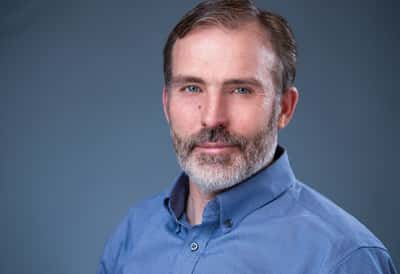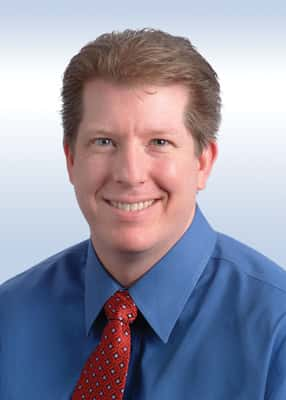The fear of breast cancer can cast a dark shadow over a woman’s life. It’s one of the most common types of cancer in females, and it’s the rare person who doesn’t know someone who’s received a diagnosis. The National Cancer Institute expects 271,270 new cases in the United States in 2019, so it’s a valid concern. Women can be proactive, however, by learning about the risk factors and taking steps to protect themselves.
Breast cancer is a complex disease. Like all cancers, it involves uncontrolled cell growth, and it has a range of types and subtypes that fall into two categories, depending on its origin. “It starts in the ducts, or it starts in the lobules,” explains Anne Peled, M.D., co-director of the Breast Center of Excellence at Sutter Health California Pacific Medical Center in San Francisco. In addition, it can be either in situ, when it hasn’t gone beyond its original location and is stage 0, or it can have the potential to spread and is staged from 1 to 4, depending on tumor size and degree of metastasis. Within the categories, some are sensitive to hormones and others aren’t, and while some come with risk factors that women can potentially address with lifestyle changes, others are unchangeable. Thus, it’s a formidable challenge, but not an impossible one, as research continues to add to the understanding of the disease, and new screening technology improves the likelihood of early detection.
In the mid-1990s, Marin County was reputed to have the highest rate of breast cancer in the United States. To find out why, the Marin County Department of Health and Human Services, in partnership with community members, legislators and researchers, launched the Marin Women’s Study. Between 2006 and 2010, everyone in the county who had a mammogram, whether for screening or diagnostic purposes, was invited to participate. The result was data from more than 13,000 women, who provided researchers with a wealth of information for their studies in determining how reproductive, demographic and biological factors affect the risk of breast cancer. “The high rate of breast cancer stimulated a lot of concern and interest,” says Matt Willis, M.D., public health officer, Marin County Health and Human Services. The research, contributed substantially to the body of knowledge about the disease. “Our goal was to give women ways to protect themselves,” says Willis, but it also made them aware of factors they don’t have control over, which underscored the need for effective screening.

Understanding estrogen
One of the study’s key findings was the risk hormone replacement therapy posed, especially when it was a combination that contained both estrogen and progesterone, and women used it for more than five years. Willis reports that after researchers identified the risk in studies published in 2002, doctors stopped prescribing less HRT, and the subsequent change was demonstrable. “There was a reduction in the number of cases, and it was partly attributable to the decrease in use,” he explains.
Estrogen is the hormone that gives women their distinct physical characteristics, and it also plays a role in reproduction. Men have it as well, but in much lower amounts. Too much of it elevates the risk of breast cancer, though it occurs naturally. Peled explains that women who had their first period early or experienced menopause late may be at increased risk because their exposure to estrogen lasts longer. Though estrogen levels are higher in pregnancy, and undetected breast cancers already present can be stimulated to grow during pregnancy, having children at an earlier age is protective overall. Breastfeeding lowers the risk because it decreases hormonal activity in the breasts. In addition, fat stores estrogen, and so maintaining a healthy weight is beneficial. Alcohol consumption increases estrogen levels, and Peled suggests that women at high risk limit drinks to four a week or fewer, while other women should keep it to no more than seven. She also reports that using birth control might elevate the risk slightly, but, she says, “That’s still a bit of a gray zone.”
For a small number of women, the past use of diethylstilbestrol (DES), a synthetic form of estrogen, is an issue. Doctors prescribed it to pregnant women to help prevent miscarriages or premature deliveries from 1938 until 1971, when it was banned. Marc Fields, M.D., of Kaiser Permanente Medical Center in Santa Rosa, cites Center for Disease Control statistics showing that in addition to putting women who took DES at risk for breast cancer, their daughters, who were exposed to it in the womb, are 40 times more likely to develop clear-cell cancer of the vagina or cervix. “But because this cancer is so rare, this means that about one of every 1,000 DES-exposed daughters might develop clear-cell cancer,” he says.

For women who’ve had treatment for an estrogen-positive breast cancer, doctors often prescribe tamoxifen, a selective estrogen receptor modulator (SERM), to prevent a recurrence. It blocks estrogen in the breast and helps slow the growth of cancer cells. And, says Fields, “It has the side benefit of preventing a second unrelated cancer.”
In the family
Family history and genetics are unalterable, so it’s wise to be aware of cases of breast cancer in families and get tested if it’s appropriate. In 2013, after actress Angelina Jolie revealed that she had the genetic mutation BRCA1 and had undergone an elective double mastectomy, more women were tested and discovered they had the same mutation. Peled reports that it increases the risk to 60 percent or more, and that for most women with the mutation, mastectomy is effective, with a 95 percent success rate.
She adds that with testing becoming more common, women in their 60s are finding out that they have the mutation, but it might not have the same level of impact as in women who find out when they’re much younger. “If they’ve been cancer-free for that long, they might not be as vulnerable,” she says. She also reports that men can develop breast cancer with a genetic cause. She recently saw a male patient with several family members who’d had breast cancer, and it turned out that he had the same mutation as Jolie.
People don’t know they have a genetic mutation unless they’ve been tested, and Leah Kelley, M.D., a Marin breast surgeon and a steering committee member of the Marin Women’s Study, advises testing if the family risk factor is high. “One-first degree relative with cancer doesn’t constitute a risk,” she explains. Rather, one should have multiple relatives who’ve had breast cancer, especially if they were diagnosed before the age of 50. The reality is that breast cancer is so common that most people will be related to someone who’s had it, so it’s best if patients share their family history with their physicians, discuss the risk factors and have a conversation to determine the best strategy before undergoing tests.
Willis reports that breast cancer is 100 times less common in men than in women, but many of the risk factors are the same. Though it’s considered a women’s disease, men who are stricken with it often have to overcome the belief that it carries a stigma. “An important way to reduce the number of deaths caused by this disease is early detection and prompt treatment,” he says, but regular screening mammograms aren’t recommended for men. Thus, if a man feels a lump in his breast, he should contact his physician immediately for evaluation, as should a woman. Male breast cancer tends to be sensitive to hormones, so the use of testosterone is a risk factor, along with obesity and alcoholism.
Screening
Dense breasts constitute a risk for many women, not because they elevate the risk of breast cancer, but because early detection can be difficult. If a woman does have a tumor, it might only be detected at a later stage, making treatment more difficult. “It’s important to have regular 3-D mammograms because it’s the best technology,” says Kelley, adding that a negative mammogram should not deter women with dense breasts from seeking care.

Many doctors suggest that women begin regular screening at the age of 50. Kelley, however, reports that the medical community has had significant internal debate about appropriate intervals and the timing of mammography, and, locally, she advises starting at 40. She stresses that it’s the schedule that saves the most lives and allows the most years of life. She explains that recommendations for starting at 50 and screening every other year are based on studies targeted to women at average risk, but women in Marin have a greater degree of risk factors, which are related to socioeconomic status and reproductive choices that are intertwined. Among them, college-educated women tend to have children later, between 30 and 35 or not at all, and that increases the risk. According to Kelley, it’s a factor that helps to explain the high rate of breast cancer in the 1990s.
“The scare was a little misleading,” says Kelley. “The high rate in Marin was a demographic issue, not a geographic issue.” It wasn’t something in the air, ground or water, as many people feared. Instead, it related to the kind of people who live in Marin and the choices they make. When compared to similar counties with the same kind of demographic, such as Orange County in Southern California or Westchester County in New York, the risks were similar. She points out that the demographics mean that women might have risks they don’t know about, and so they should discuss the issues with a doctor to determine the best screening schedule.
Tomography, or digital mammography, is today’s standard, and its ability to provide 3-D images increases the detection rate of small cancers, especially in dense breasts. It also decreases the false positive rate. Marin Healthcare District has been using it for more than two years at its Breast Health Center in Greenbrae, and Kelley reports that although the improvement isn’t dramatic, when viewed over a large number of patients, it makes a difference.
QT Ultrasound in Novato is offering a new method of ultrasound that’s an adjunct to 3-D mammography. The company received FDA clearance in 2017. “We’re seeking to add value to the paradigm of early detection,” says Rajni Natesan, M.D., who is chief medical officer and oversees clinical trials. She reports that approximately 40 percent of women in the U.S. have dense breasts, and for every woman diagnosed with breast cancer, another 19 have false positive mammograms, even though their breasts are normal or benign.
Dense breasts are an area of particular interest, as density is an independent risk factor for breast cancer. Natesan explains that it’s now possible to quantitatively measure breast density with QT Ultrasound without radiation. It involves a mathematical calculation that divides the volume of fibroglandular tissue divided by the total breast volume to provide a measurement to help physicians assess density more accurately, which is important in understanding a woman’s lifetime risk of developing breast cancer. Natesan observes that part of the journey in finding solutions is education. “It’s a natural progression,” she says. “As we do more research, we learn more about how we can be more helpful to patients.”

One goal is to reduce the number of false positives, and another is to reach the women who don’t comply with screening guidelines because they are concerned about radiation or the discomfort that the compression involved in a mammogram causes. “QT is purposefully seeking to eliminate areas of concern,” she says. She explains that QT Ultrasound’s technology platform is different to conventional ultrasound, in which a hand-held device transmits a high-frequency sound pulse into the breast and then hits a boundary that sends the waves back to the probe to be relayed to a machine. Instead, quantitative transmission ultrasound sends a signal through the breast, which is immersed in body-temperature water, and captures it on the other side. The images are acquired and reconstructed in three dimensions, are very high resolution and provide a great deal of information. Breast imaging centers are now in Novato, Walnut Creek, San Jose and Grand Rapids, Mich. “We hope this will be beneficial for all women,” says Natesan. “We haven’t had an entirely new modality in breast imaging in a long time.”
Lifestyle
Lifestyle choices make a significant difference in preventing breast cancer, and they give people the power to make wise decisions that will reduce their risk. “There are basic things women can do to protect themselves,” says Willis. Among them are choosing a healthful diet, engaging in regular exercise, managing one’s weight, getting enough sleep and moderating alcohol consumption.
Although they appear to be common-sense strategies for good health, why they deliver benefits in reducing the risk of breast cancer isn’t always clear. Stress and too little sleep, for example, are potential risk factors, though they’re likely part of multi-factorial reasons why women get breast cancer. (Notably, people who don’t get enough sleep may also gain weight, compounding the risk.) “No one knows exactly, but the thinking is that there’s a component of inflammation,” says Peled. “The body probably has a higher level of inflammatory markers.” She also dispels some common myths, explaining that using deodorant and wearing underwire bras are external factors and do not pose a risk. “Women worry about those, but we haven’t shown that they increase the risk of breast cancer,” she says. The radiation in mammograms also concerns some women, but the amount is so small that it doesn’t make the risk greater. Rather, it helps find tumors at earlier stages.
One of the most effective preventive measures is moderate regular exercise, and it’s independent of any other factors. Kelley reports that when women engage in physical activity, it’s beneficial for their entire lives, and so girls who are active have a head start. “When they start in adolescence, it appears there’s already an effect on hormone levels,” she says. “When it comes to breast cancer prevention, as with every other chronic disease, there is a magic pill, and that magic pill is exercise.”
Many of the strategies for lowering the preventable risk factors are elements that also contribute to an overall healthful lifestyle, making adopting them even more compelling. “The steps we might take to protect ourselves from breast cancer actually protect us against the most common diseases associated with age, including heart disease, stroke, dementia, and other cancers,” says Willis. He explains that staying active, eating healthy foods, maintaining a healthy weight and avoiding excess alcohol are keys to healthy living, and they have benefits that go far beyond reducing risk of breast cancer for both women and men.
Knowledge is power, and as women learn more, confer with their physicians and consciously take steps to protect themselves, the incidence of breast cancer could well continue to drop. Zero breast cancer is a dream for the future, and women have their own unique role to play in making it become reality. They are their own best advocates, and it’s up to them to act.




